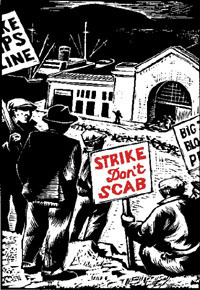|
|
|
|
|
|
B.C. Privatized bus service not right route
B.C. Privatized bus service not right route
http://www.pressconnects.com/article/20131020/VIEWPOINTS02/310200005/
4:51 PM, Oct 18, 2013 | Comments
Written by
Nadine Lemmon
Broome County Executive Debbie Preston’s proposal to privatize B.C. Transit should move slower than a car stuck in bumper-to-bumper traffic. Because that could be the result of a reworked bus system with higher fares, less service and reduced ridership.
That’s what happened in Nassau County on Long Island after the county privatized its bus system in 2012.
For almost 40 years, the Metropolitan Transportation Authority ran Nassau County’s bus system. In 2010, the MTA proposed withdrawing its monetary subsidy to the county, a financial perk no other county in the MTA region received, as a way to cut costs and get Nassau County to pay its fair share to its bus system. Instead, Nassau County officials decided to privatize what was once one of the largest suburban bus systems in the country.
While it is true that Nassau County is paying less to subsidize what is now called the Nassau Inter-County Express system, riders are paying more while also getting less for their money. That’s because only four months after the NICE bus launch, service was cut throughout the system.
It is no surprise then that NICE riders have become increasingly dissatisfied with their service. A NICE survey from this past summer found that rider satisfaction has dropped 32 points — 61 percent to 29 percent — from June 2012 to June 2013.
In what is potentially another indication of NICE customer dissatisfaction, ridership has dropped more than 5 percent through August 2013 (the most recent data available) as compared to the year prior to privatization. And if this year’s ridership trend continues, 2013 ridership will be even lower, on pace for the lowest ridership the system has seen in 15 years.
These negative trends are taking place despite New York providing 20 percent more funding to help fill the gap in the county’s contribution, and despite (or perhaps because of) riders paying roughly $3 million more in higher fares. While some of this additional funding went to restoring a portion of the service cuts made in 2012 as well as to new services on higher demand routes, the private operator is still providing 12.25 percent fewer miles of service and almost 12 percent fewer hours of service to bus riders through August 2013 than in 2011.
The reality is that whether a transit system is publicly or privately run, neither has a chance of being successful without dedicated and committed funding from the county.
Without more support for B.C. Transit from Broome County’s elected officials, the nearly 2.5 million annual riders of B.C. Transit could face reduced service and higher fares, making it more difficult to get to work and school as well as conduct their daily lives. As a result, the county’s economy, environment and quality of life for all Broome County residents could deteriorate.
Lemmon is the Albany legislative advocate for the Tri-State Transportation Campaign, a nonprofit policy and advocacy organization.
-

- Log in to post comments
- Printer-friendly version



